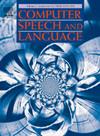Minerva 2 for speech and language tasks
IF 3.4
3区 计算机科学
Q2 COMPUTER SCIENCE, ARTIFICIAL INTELLIGENCE
引用次数: 0
Abstract
Most artificial neural networks do not directly incorporate a memory of previous experiences, instead using training data to parameterise a model, and then discarding the training data prior to inference. While some recent models have included a memory, this has typically been added to an already highly parameterised model. An alternative option is to use a purely memory-based model, and then add parameters. This has been shown to work for Minerva 2, a simple, non-parametric, memory-based model which has been widely used in the field of human psychology. We revisit the use of Minerva 2 for speech and language tasks, drawing comparisons between Minerva 2 and other architectures, and showing that an iterative process that Minerva 2 uses for inference is a close relative of deep equilibrium models. We assess parameterised models based on Minerva 2, including a sequence model inspired by Minerva 2’s similarity to the transformer architecture, which shows promising results.

Minerva 2用于语音和语言任务
大多数人工神经网络不直接结合以前经验的记忆,而是使用训练数据来参数化模型,然后在推理之前丢弃训练数据。虽然最近的一些模型包含了内存,但这通常是添加到已经高度参数化的模型中。另一种选择是使用纯粹基于内存的模型,然后添加参数。Minerva 2是一个简单的、非参数的、基于记忆的模型,已被广泛应用于人类心理学领域。我们重新审视了Minerva 2在语音和语言任务中的使用,在Minerva 2和其他架构之间进行了比较,并表明Minerva 2用于推理的迭代过程是深度平衡模型的近亲。我们评估了基于Minerva 2的参数化模型,包括受Minerva 2与变压器架构相似性启发的序列模型,该模型显示了有希望的结果。
本文章由计算机程序翻译,如有差异,请以英文原文为准。
求助全文
约1分钟内获得全文
求助全文
来源期刊

Computer Speech and Language
工程技术-计算机:人工智能
CiteScore
11.30
自引率
4.70%
发文量
80
审稿时长
22.9 weeks
期刊介绍:
Computer Speech & Language publishes reports of original research related to the recognition, understanding, production, coding and mining of speech and language.
The speech and language sciences have a long history, but it is only relatively recently that large-scale implementation of and experimentation with complex models of speech and language processing has become feasible. Such research is often carried out somewhat separately by practitioners of artificial intelligence, computer science, electronic engineering, information retrieval, linguistics, phonetics, or psychology.
 求助内容:
求助内容: 应助结果提醒方式:
应助结果提醒方式:


